State Channel Scalability Calculator
Results
Traditional Blockchain Cost Per Day
$0.00
State Channel Cost Per Day
$0.00
Potential Fee Savings
$0.00
Throughput Improvement
0x
When blockchain networks hit congestion, State Channels a Layer2 solution that moves many transactions off‑chain, only posting the final balance on‑chain can dramatically improve performance.
Quick Takeaways
- Only the channel opening and closing need on‑chain writes, cutting fees by up to 99%.
- Throughput jumps from a few dozen to thousands of transactions per second.
- Privacy improves because intermediate moves stay off the public ledger.
- Best for frequent, low‑value interactions like gaming or micropayments.
- Implementation requires collateral and careful dispute handling.
How State Channels Work
First, participants lock a predefined amount of cryptocurrency in a Smart Contract code on the main chain that enforces the rules of the channel. Once the contract is funded, the channel is considered open. From that point on, the two (or few) parties exchange signed messages that represent balance updates. No transaction hits the blockchain during this exchange - each side simply verifies the other's signature and updates its local copy of the channel state.
When the parties decide to finish, either can submit the latest signed state to the contract. The contract verifies the signatures and releases the locked funds according to the final balances. Because only two on‑chain transactions are required - one to open and one to close - the network avoids the bottleneck that full on‑chain processing creates.
Because the channel runs off‑chain, the speed of each update is limited only by internet latency, not by block time. A well‑designed channel can settle a transaction in a fraction of a second, which feels instantaneous to the user.
Scalability Benefits that Matter
Throughput is the most obvious gain. Traditional blockchains like Bitcoin or Ethereum typically manage 5‑30 transactions per second. A single state channel can handle thousands of updates per second, effectively turning the channel into a private high‑speed lane. The result is lower congestion on the main chain, which keeps other users' fees and wait times down.
state channels also slash transaction costs. Since only the opening and closing need to be recorded, users pay fees for just two on‑chain writes instead of dozens or hundreds of individual moves. In real‑world tests on the æternity network, fees dropped from about $0.10 per transfer to virtually zero for off‑chain updates.
Speed and cost go hand‑in‑hand with privacy. Because intermediate balances never appear on the public ledger, competitors or outsiders cannot track the detailed flow of funds. Only the start and end points are visible, which is valuable for businesses that need to keep trade secrets.
Finally, the model is flexible. Developers can build custom logic inside the channel - for example, a gaming rule that awards points or a streaming service that settles per‑second payments. The channel’s off‑chain nature means those rules can be as complex as needed without slowing the main chain.
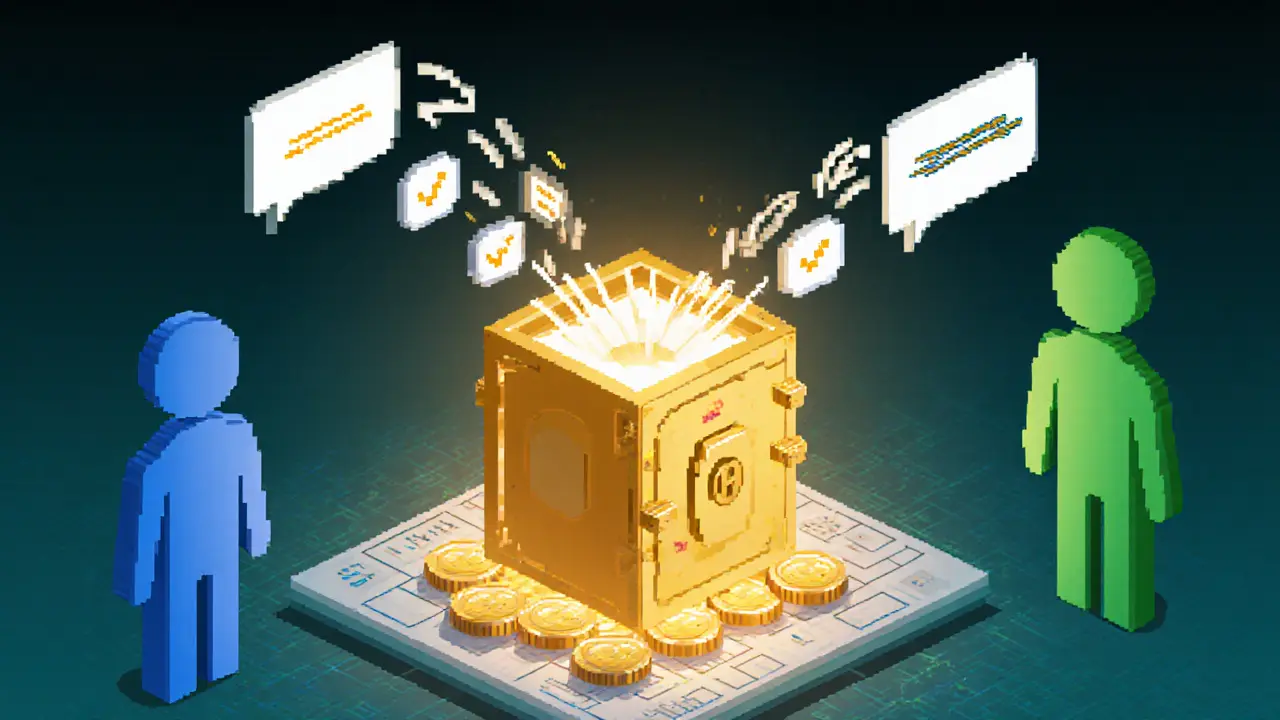
Real‑World Use Cases
Gaming is a natural fit. Multiplayer games often require dozens of small moves per second - buying items, updating scores, wagering tokens. By keeping those moves inside a channel, the game feels snappy, and players don’t pay hefty gas fees for each action.
Micropayments are another sweet spot. Think of a news site that charges a fraction of a cent per article or a music streaming platform that bills per second of playback. Traditional on‑chain payments would be too expensive, but a channel lets users pre‑deposit a bucket of funds and then distribute tiny slices instantly.
Real‑time applications like IoT device settlements or supply‑chain hand‑offs also benefit. A sensor could report usage data and receive payment within milliseconds, all off‑chain, while the final audit lands on the blockchain for accountability.
How State Channels Compare to Other Layer2 Solutions
| Feature | State Channels | Sidechains | Rollups |
|---|---|---|---|
| Security Model | Inherits full security of base chain (funds locked in smart contract) | Relies on separate consensus - may be weaker | Depends on data availability proofs; strong but more complex |
| Ideal Use Case | High‑frequency, bilateral or small‑group interactions | General purpose scaling, cross‑chain bridges | Broad‑user DeFi, token transfers |
| On‑Chain Writes | Only open & close (2) | Every block can write (many) | Batch of dozens to hundreds per rollup period |
| Fee Savings | ~99% vs. on‑chain per action | Reduced but still per‑tx fees | Lower than on‑chain but still per‑tx |
| Privacy | Off‑chain moves hidden | All moves visible on sidechain | Data posted on‑chain (public) |
The table shows why state channels shine when two parties interact a lot. Sidechains and rollups are better for opening the whole network to many unknown participants.
Implementation Considerations
Opening a channel requires collateral - the amount you lock in the smart contract. This upfront commitment can be a barrier for users with limited funds. Some projects mitigate this by allowing escrow services or by pooling collateral across many users.
Dispute resolution is another knotty area. If one party disappears or tries to cheat, the other must submit the latest signed state to the contract. The contract then enforces a challenge period during which the opposing party can present a newer state. This on‑chain dispute process can be slower and may incur fees, so developers often build watch‑tower services that monitor channels and automatically raise disputes if needed.
Security depends heavily on the correctness of the smart contract that holds the funds. A bug could let an attacker steal locked assets. Audits by reputable firms are essential before deploying a channel contract to mainnet.
Complexity grows with the number of participants. A channel that connects three or more parties must manage multi‑signature agreements for each update, which can increase latency and the chance of state mismatches. For larger groups, other scaling solutions like rollups might be more practical.
Hands‑On Example: Building a Channel on æternity
æternity offers a built‑in channel framework that abstracts most cryptography away. The typical flow looks like this:
- Install the æternity CLI and create two wallet addresses.
- Deploy a Channel Contract pre‑written smart contract on æternity that handles opening, updating, and closing with a chosen amount of AE tokens.
- Both parties sign an initial state off‑chain - usually a JSON object with each balance.
- Exchange signed updates as the application runs (e.g., each game move).
- When the session ends, submit the final signed state to the contract. The contract releases the funds according to the last balances.
The CLI handles the heavy lifting: it creates the multi‑signature payload, verifies signatures, and interacts with the blockchain only for the two critical steps. Developers can focus on game logic or payment flow rather than low‑level cryptography.

Frequently Asked Questions
Do state channels work on any blockchain?
Most blockchains that support smart contracts (Ethereum, Binance Smart Chain, æternity, etc.) can host state‑channel contracts, but the exact implementation details vary.
What’s the minimum amount I need to lock?
It depends on the contract’s design. Some platforms let you set a few cents worth of tokens; others require larger stakes to deter abuse.
Can I have more than two participants?
Yes, multi‑party channels exist, but they add complexity in state synchronization and dispute handling. Many projects limit channels to two parties for simplicity.
How does privacy differ from regular transactions?
Only the opening and closing balances appear on the public ledger. All intermediate moves stay between the participants, so outsiders cannot see the micro‑transactions.
What happens if a participant goes offline?
The other party can still close the channel by submitting the latest known state. If the offline party later provides a newer state, the contract’s challenge period will resolve the dispute.

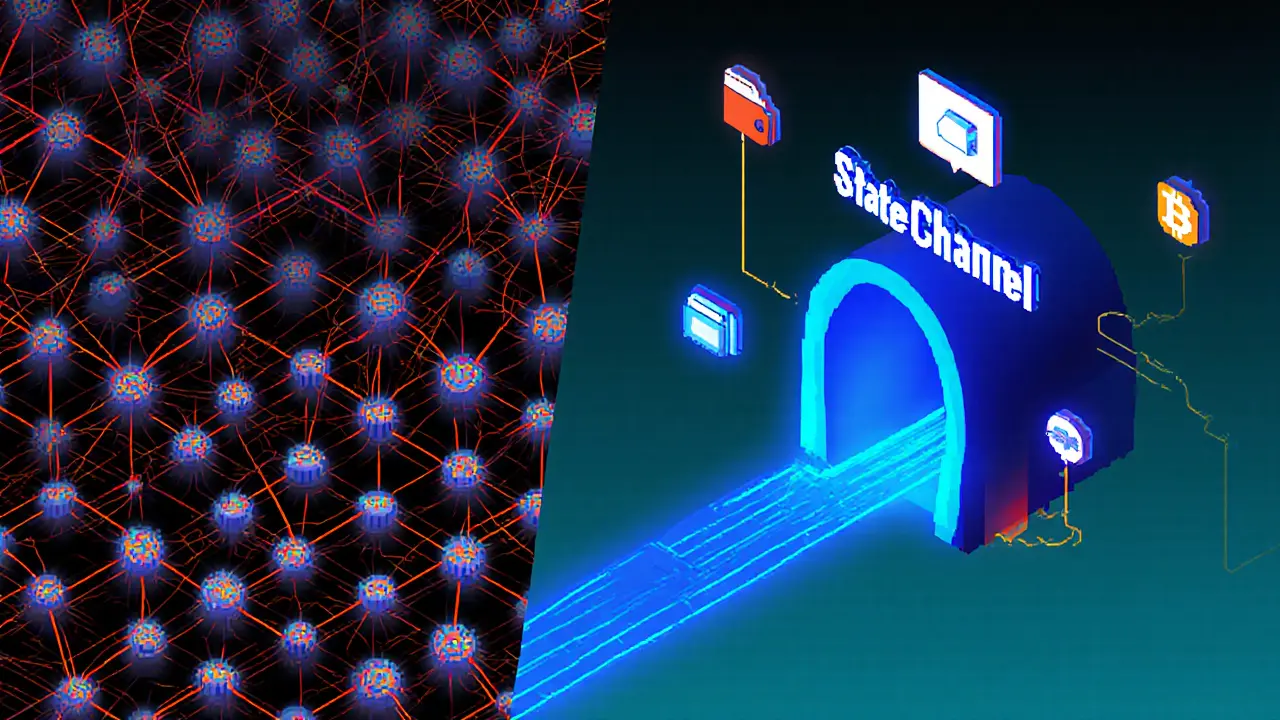
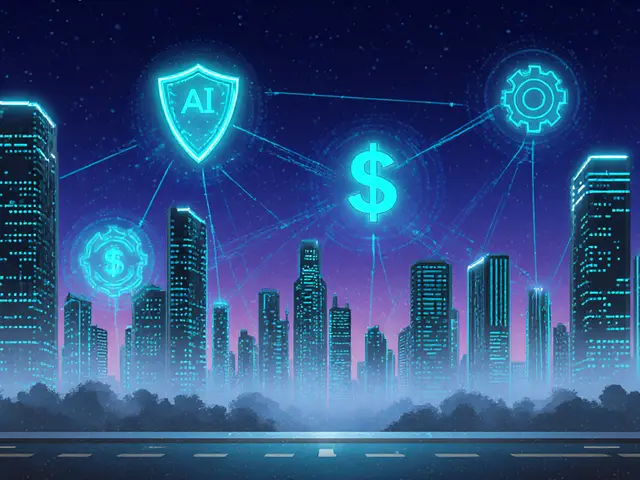
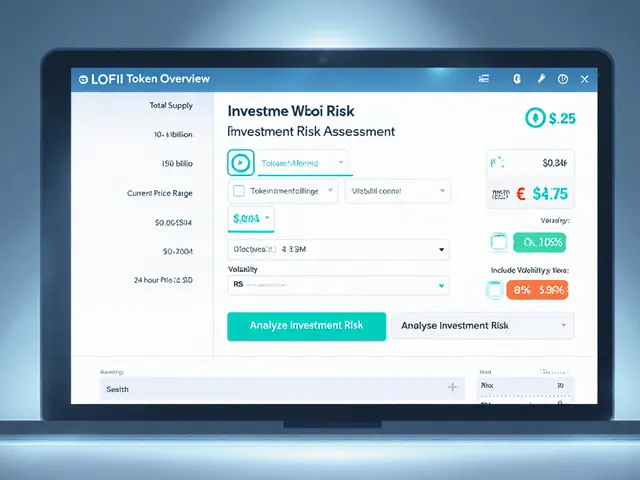
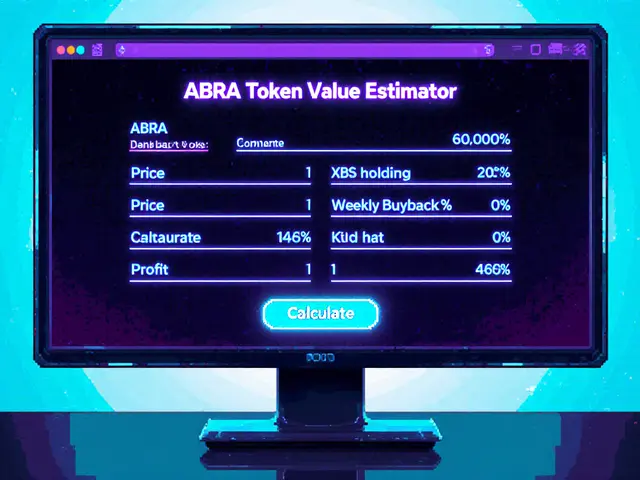


AJAY KUMAR
February 18, 2025 AT 04:42State channels are the future, and India will lead the charge!
bob newman
February 25, 2025 AT 03:22Wow, another "scalable" solution that will totally replace everything else. Sure, if you ignore the fact that most developers still can’t string together a basic smart contract without a PhD in quantum cryptography. And let’s not forget the hidden costs of monitoring channels – you’ll need a watch‑tower army that’s basically a surveillance state. Anyway, enjoy the hype while it lasts.
Anil Paudyal
March 4, 2025 AT 02:02cool stuff, but watch out for bugs in the contract code lol.
Kimberly Gilliam
March 11, 2025 AT 00:42State channels are sooo exciting
Jeannie Conforti
March 17, 2025 AT 23:22nice work! this can help many devs start building low cost games.
tim nelson
March 24, 2025 AT 22:02I get why people love the idea – less fees and faster moves feel great for users.
Zack Mast
March 31, 2025 AT 20:42One could argue that state channels embody a philosophical shift: from trustless on‑chain permanence to trusted off‑chain intimacy. Yet, the underlying cryptography still guarantees that no party can cheat without being exposed. It’s a subtle dance between decentralization and efficiency. In practice, you’re trading absolute transparency for speed.
Dale Breithaupt
April 7, 2025 AT 19:22Great summary – the channel model really unlocks real‑time gaming experiences.
Rasean Bryant
April 14, 2025 AT 18:02Love how state channels can make micro‑transactions feel instant and cheap.
Angie Food
April 21, 2025 AT 16:42Sure, just ignore the fact that every “off‑chain” solution eventually needs a back‑door for the powers that be.
Jonathan Tsilimos
April 28, 2025 AT 15:22From a technical standpoint, the amortization of on‑chain writes via state channels constitutes a significant improvement in throughput, particularly when one evaluates the cost per transaction metric under high load scenarios.
jeffrey najar
May 5, 2025 AT 14:02State channels fundamentally alter the economics of blockchain usage by collapsing the on‑chain transaction count to two per session, which dramatically reduces gas fees for participants.
When a channel is opened, both parties lock collateral in a contract, establishing a trust‑less escrow that enforces final settlement.
Subsequent interactions are merely signed messages exchanged off‑chain, meaning the network’s consensus layer is bypassed entirely for those updates.
This off‑chain exchange can occur as fast as network latency permits, often within milliseconds, delivering a user experience comparable to traditional client‑server models.
Because only the opening and closing transactions hit the blockchain, the cumulative fee for a high‑frequency use case drops by over ninety‑nine percent.
For example, a gaming application that processes 10,000 moves per minute would traditionally cost thousands of dollars in gas, whereas a state channel could bring that cost down to a few cents.
The reduction in on‑chain traffic also alleviates network congestion, indirectly benefiting all other users by keeping block propagation times low.
Privacy is another advantage: intermediate states are never recorded on the public ledger, preventing external observers from reconstructing the exact flow of funds.
Nevertheless, this privacy comes at the cost of requiring participants to remain online or employ watch‑tower services that can intervene during disputes.
If a participant disappears, the other can still submit the latest signed state, but the challenge period allows the offline party to contest if they have a newer state.
This dispute mechanism, while robust, does introduce a latency spike in edge cases, potentially negating some of the speed benefits for critical applications.
Implementation complexity is non‑trivial; developers must ensure the channel contract is free of vulnerabilities, as any bug could expose locked assets.
Security audits by reputable firms are therefore a prerequisite before deploying to mainnet.
Multi‑party channels increase the protocol overhead, as each update must gather signatures from all participants, which can erode performance gains.
Consequently, for scenarios involving many users, alternatives like rollups or sidechains may be more appropriate.
In summary, state channels provide an elegant solution for bilateral, high‑frequency interactions by delivering near‑instant settlement, minimal fees, and enhanced privacy, provided the surrounding infrastructure-collateral management, dispute resolution, and security audits-is properly addressed.
Jerry Cassandro
May 12, 2025 AT 12:42Excellent breakdown – the trade‑offs you mentioned are exactly what developers need to weigh before choosing a channel.
Parker DeWitt
May 19, 2025 AT 11:22😂😂 love the detail, but remember the hidden costs of watch‑towers! 🚀
Allie Smith
May 26, 2025 AT 10:02True, and from an optimistic standpoint, the user experience can be a game‑changer for indie developers.
Lexie Ludens
June 2, 2025 AT 08:42While we’re dreaming big, let’s not forget that a single buggy channel could drain all parties – drama!
Aaron Casey
June 9, 2025 AT 07:22From a security perspective, the reliance on the underlying smart contract means that any vulnerability could compromise the entire channel ecosystem.
Leah Whitney
June 16, 2025 AT 06:02Great point! I’d add that thorough testing and community audits can mitigate many of those risks.
Lisa Stark
June 23, 2025 AT 04:42Philosophically, state channels reflect a shift from permanence to temporality, redefining how we think about trust in decentralized systems.
Logan Cates
June 30, 2025 AT 03:22They’re probably part of a bigger agenda to push users into centralized monitoring services under the guise of “security”.
Shelley Arenson
July 7, 2025 AT 02:02👍 nice summary!
AJAY KUMAR
July 14, 2025 AT 00:42India’s developers should adopt this ASAP.